I. Automated Anxiety This article was held in Lanzhou at the beginning of May to participate in the automation professional teaching committee meeting in Lanzhou, including the joint meeting of the directors of the National Automation Institute held in the same period. The academic circles had a heated discussion on the automation education in the era of intelligent manufacturing. It is a consistent style that engineers and engineering professionals always maintain a straightforward and straightforward attitude. The focus here is on the integration of artificial intelligence and automation, that is, how to advance with the times in the new era to adapt to the industry. The match between demand and national strategy - it can be seen that there are some components of anxiety that can be summarized as:
(1). Is the attraction of the automation profession falling?
(2) How does artificial intelligence integrate with automation to solve the problem of intelligent manufacturing?
Although this is an academic meeting, it seems that everyone is anxious :), but in fact, there is also some anxiety about the industry. The industry’s focus is therefore on how to find growth points. The traditional market is already saturated. How to bring new business growth through "digital transformation", today's smart manufacturing has been spurred by the idea of ​​"Internet +", "artificial intelligence", "cloud computing" and other ideas from IT, but how to grasp this digital trend is Every automation industry must think about the problem, and confusion is inevitable to some extent.

The first problem is obvious. The university adopts general education. Therefore, in order to enroll students in large categories, and to choose majors in junior year, the automation profession faces the dilemma of fewer and fewer choices of students. Similarly, students who graduated from automation majors Often do not go to manufacturing (mechanical, systems, automation companies themselves), because "profits drive the soul" - there are more money! Just like once a headhunter at the SCOM (Supply Chain Management) conference, Alibaba asks you how much you pay - people will tell you that the salary is just your pocket money! You don't have to care about this.
The anxiety of the industry lies in the loss of talents. At present, the students who graduated from universities have flowed to the mobile Internet and IT enterprises represented by ATMs, including the financial industry. The number of companies that can come to the manufacturing industry has been relatively small, and talent recruitment has encountered difficulties. In the absence of manufacturing profitability, there is a lack of attractiveness for students.
The second problem is to enhance the attractiveness, and the competition is the "computer" category. There are a lot of research resources tendencies. The country will see "artificial intelligence" so heavy that even high school starts. The education of AI, which seems to be divided into the field of "computer engineering and science", rather than automation, means that professional marginalization and future financial and project disadvantages will create a vicious circle. When talents flowed to areas such as IT and artificial intelligence, it also made the upgrading of the automation industry difficult, because the lack of relevant talents, so that only stay in the concept stage and can not land.
Unlike traditional industries, IT lacks sufficient support in the initial development of the IT industry. Therefore, IT operates in a purely market-oriented environment, and computer-related majors also benefit from the rapid growth of IT technology and better. The integration of the industry, therefore, in comparison, the integration of computer-related professional and IT is very close, and from a practical point of view, IT mainly provides programming conditions - a notebook can be, and automation requires a device And the need for complex environmental support on site, the requirements for stability and reliability make the life cycle of automation products tend to be long, and the complex environment on site makes the industry unattractive and relatively attractive in terms of innovation.
Second, anxiety and questioning do not produce value?
In fact, just like the crisis encountered by the very busy Peking University President Lin a few days before the meeting, reading the typo is not the key, and more criticism comes from his phrase "anxiety and questioning does not create value...".
Anxiety will generate the driving force for change, and will enable people to face the problem and find a solution. For the academic world, the same is true in the industry. Because of the integration of IT and OT, the traditional OT is relatively low in openness. IT wants to enter OT and also has problems:
(1). IT iterations can't happen on OT. Many IT people want to enter the manufacturing industry. Their thinking sometimes compares inertia: "If this precision is not reached, then can I get close first, then slowly iterate to Target accuracy" - However, the customer does not allow the system you provide to iterate. You only have to achieve an accuracy of 0.1mm to cooperate with them, instead of reaching 0.3 first, then slowly reaching 0.1mm, which involves huge The cost of testing, therefore, this iteration is not like the operating experience on the HMI of the phone, only software-level optimization, does not generate physical material costs.
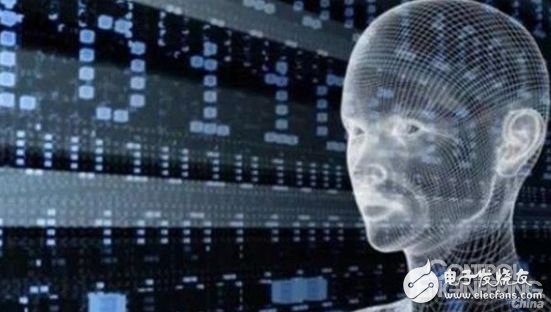
(2).IT will not have very strong real-time and stability requirements.
IT actually thinks that the problem of manufacturing is simple in a certain sense. It is extremely difficult to say that IT wants to access data. Various fieldbuses and various constraints, therefore, IT can do non-real-time, Non-personal security, non-emergency tasks, but for complex control scenarios, IT is still not easy to get involved, because it has also been reasonable to automate people for decades.
In fact, in the process of integrating artificial intelligence and automation, we must clearly understand our own advantages:
(1). The advantage of automation lies in the industry knowledge. Regardless of the process industry, large-scale hydropower engineering, power grid, pharmaceutical, food and beverage industries, automation has been operating in the past few decades to achieve high-quality product quality control, high-speed cutting. Processing, carburizing processes and process optimization, including MPC model predictive control, APC-advanced process control, are themselves in the category of intelligence.
The Know-How of these industries has accumulated for decades, and the problem is that the benefits are greater. Any control tasks and artificial intelligence tasks with great benefits are obviously from the industrial field. In the past, artificial intelligence was not used. Wait, just because the computing power, storage, and network capabilities provided by IT have not been achieved, and today, IT provides us with these conditions, and we use this to play.
(2). Automation and artificial intelligence in the manufacturing industry. The current computer-related professional artificial intelligence mainly focuses on voice and vision, and its application scenarios are often consumer. These are different from the industrial field for artificial intelligence. There are more constraints. Therefore, computer professional AI experts are not good at solving manufacturing problems, but automation professionals are good at it. Therefore, this is not contradictory.
(3). Why is pain more than automation?
In fact, I am also anxious about the results of communication with non-automated professionals such as computer and mechanical teachers. Because IT-related majors want to enter the manufacturing industry, they can't find a suitable scene. They are also very painful because they only Can teach students to solve some APP development or the development of library management systems and traffic signal systems. They can't do anything about the smart manufacturing scene, and the mechanical profession is also anxious because they have problems with the actual industry.
(4). There is a need for automation and computer. In fact, there is a very important issue. This is an era in which everyone must learn from each other. Automation and computer science cannot integrate problems well because artificial intelligence is actually a There is a very high requirement for "mathematics". Therefore, mathematical analysis methods and models are also deeply integrated into this scene.
(5). The innovation drive can stimulate the education industry. It always feels that education has problems and cannot cultivate suitable talents. However, the industry itself has certain responsibilities. China's manufacturing industry itself lacks innovation and is “plagiarized†in many industries – This also makes the principle-based forward design and R&D not really exist. Therefore, enterprises generally do not pay much attention to the work of engineers, and they cannot pay enough attention to "knowledge". Their profitability is generally weak and cannot be provided. Adequate research funding and excellent treatment are not only issues of education, but also problems of demand. If the industry lacks independent innovation, it will not have a clear horizontal pull on the university.
Third, how should the automation profession develop?
Since last year, new engineering has become popular, including Fudan Consensus and Tianda Action, which has provided programmatic guidance for the entire engineering education. This looks good. It is aimed at manufacturing 2025 talents, emerging majors, and complex interdisciplinary disciplines. Cultivate and combine industrial advantages to cultivate practical talents and innovative technical talents.
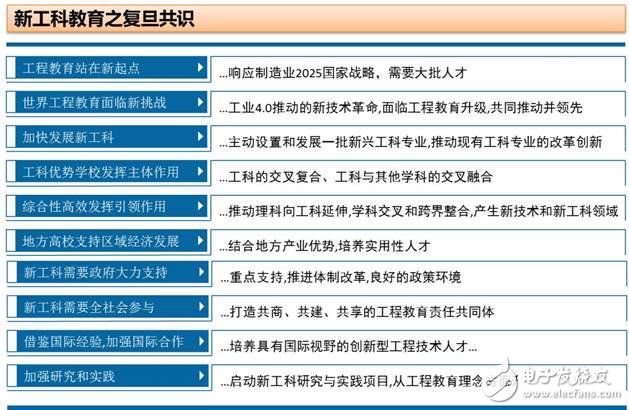
Figure 1 - Fudan Consensus of New Engineering
Figure 1 shows the summary of Fudan's consensus. In fact, it can be believed that this is also a guiding program for existing problems and finding solutions to problems. It is not profound to understand the problem. This consensus should be condensed for decades. Educational issues and the direction of the grasp.
Summary of Tianda’s actions The Tianda Action raised several key “problemsâ€:
(1). Ask international and build standards: Establish reasonable teaching quality, methods, and certification standards. CDIO, Washington Agreement, etc. have also been introduced and promoted.
(2). Asking for needs, building a profession: Closely integrated with the actual situation of the industry, it has indeed carried out "bots", "artificial intelligence", "Internet of Things" and other majors.
(3). Asking about technology and changing content: At present, the content of the school has been out of touch with the actual industry. The content of the textbook must be modified to meet the frontier. Another aspect is to strengthen the cultivation of thinking, not just the technology itself.
(4). Asking for interest, change method: Nowadays, students are more individualized, and they are more interested in driving. They will give up learning. If there is no attractive teaching method and a significant driving force for the future, then students cannot be attracted. Invest in it.
(5). Ask resources, create conditions: This is not very clear, not to be stated.
(6). Asking schools and pushing reforms: Reform must first clear the problems, needs, and can be targeted. Reform requires strength and requires great design.
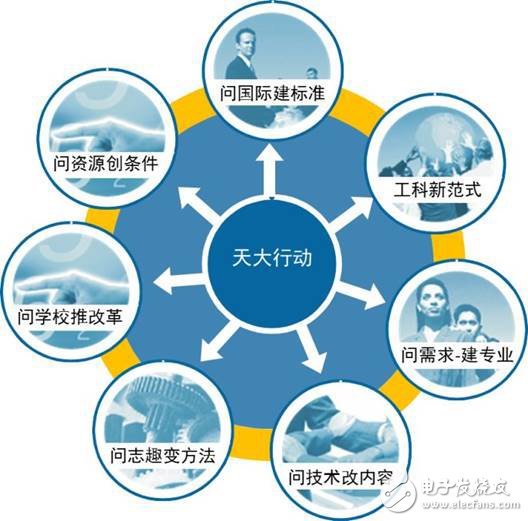
Figure 2 - New Engineering
It looks very good, how to implement it, it is afraid of quantitative assessment - KPI is not a good method, it must be combined with the actual situation of the industry, we can study the changes of the industry to understand the development of education more effectively, because education serves the industry, and It is the best state to form a positive interaction with the industry and promote each other.
Fourth, the demand for education in intelligent manufacturing background Since 2014, Germany proposed Industry 4.0, the Chinese government proposed "manufacturing 2025". In the past few years, the concept has been surging, and the trend of thought is also changeable. However, its origin, intelligent manufacturing is still It is to return to its service to customers' needs, to provide more cost-effective production and manufacturing processes, rather than to the Industrial Internet for the "Industrial Internet", intelligent manufacturing for intelligent manufacturing, and many schools actively cater to market development and promote intelligence. Manufacturing professional construction, but if you don't come from the manufacturing site, you can't understand manufacturing.
Many of the concepts that have been discussed are not discussed. From the perspective of digital manufacturing, the application scenarios such as automation and intelligence can be used to distinguish the technologies that need to be further developed for automation and intelligence, and the problems to be solved.
3.1 Manufacturing scenario analysis
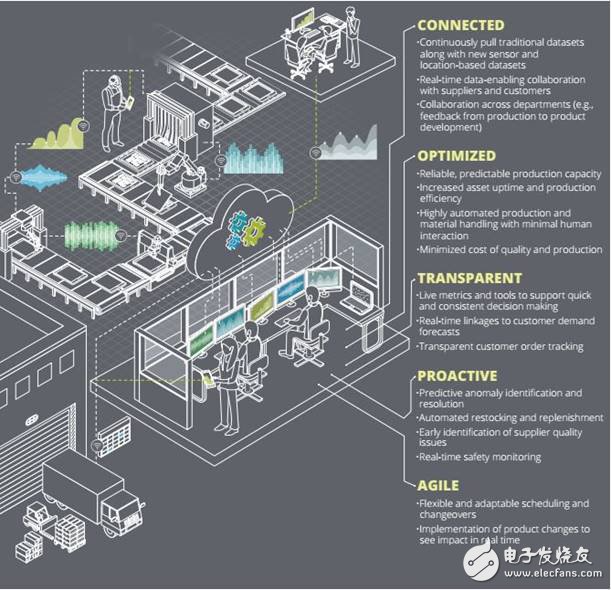
Figure 3 - Mckinsey Digital Factory
Figure 3 is a description of McKinsey's digital factory, including connectivity, optimization, transmission, preventive, agile, etc. It can be seen that the first basic connection includes physical equipment, communication, software connection, and then through data collection, Aggregation, regression, analysis, optimization, and ability to prevent/predict, and guide the factory to achieve agile manufacturing, which involves comprehensive issues such as automation control, statistical learning, machine learning, artificial intelligence, and lean operations.
The application scenarios of AI and ML mainly focus on optimization. The following figure reflects the application priority and potential of AI in various fields.

Figure 4 - Machine learning process
Machine learning has actually been used in many original industrial scenes, but today it is being used by computer professionals because external conditions are more mature. In fact, the existing automation system provides the ability to implement local machine learning (as a branch of AI), or extend to the Edge CompuTIng platform to learn, solve planning, optimization, and strategy issues.
3.2pWC panorama on digital factory
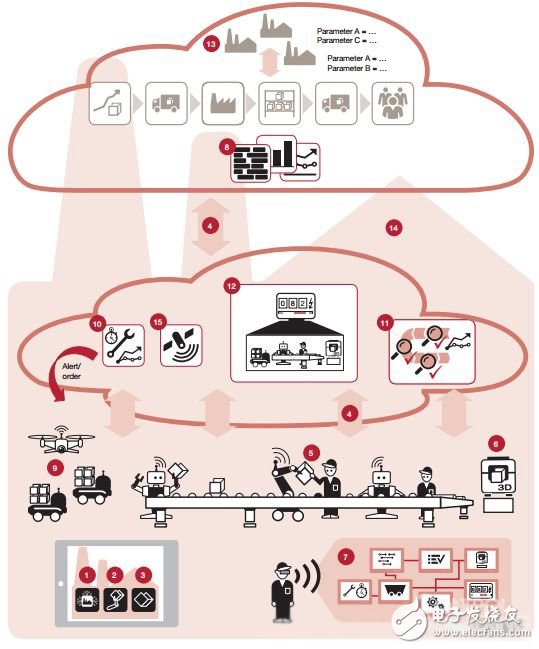
Figure 5 - Application scenario requirements for pWC digital manufacturing
The picture description of this panoramic view of pWC helps us understand the intelligent grading in the entire digital factory. In fact, the technology used is naturally different, but this picture presents a complete panorama of digital manufacturing.
1.Digital Twin: In this scenario, digital hygiene includes digital hygiene for the factory itself, production equipment and facilities, and the product itself, and this includes several aspects of the current digital twinning (1/2/ in the figure) 3)
2. Connected Factory, in the diagram of pWC, refers to the AGV, logistics, robots used to connect the plant units, and the auxiliary equipment used to turn production into "continuous" integration.
3. Modular production units: These are the design and manufacture of equipment, such as the independent equipment of the beer and beverage factory, which can be reorganized according to the changes in production, and here it involves the modeling and simulation of the production equipment itself in the digital hygiene.
4. Flexible manufacturing method:
5. Process Visualization/Automation: The SCADA role has been redefined, and it has become very easy to implement visual monitoring based on new IT technologies, which can be achieved based on Mobile technology.
6. Integration planning: Based on MES/ERP technology, realize the architecture of the entire plant.
7. Analysis of data applications:
Predictive maintenance
b. Data Driven Process / Quality Optimization
c. Data enabled resource optimization
d. Transmission of production parameters
e. Quality traceability and tracking We can see that both Mckinsey and pWC are from the research of a large number of enterprises in the industry, and summarize the goals and directions of digital manufacturing, but the integration is inevitable, automation, computer, mathematics Lean management needs to work together to achieve goals.
V. Observation: Where are the similarities and differences between smart manufacturing and tradition?
1. Back to the first principle - the essence of manufacturing, whether it is automation or automation industry, no need to worry, keep calm, return to the source, in fact, the essence of manufacturing must be the cost efficiency of the product, the biggest difference is Connection, digitization, and intelligence, however, the industrial applications and software accumulated by traditional automation itself will not lose value because of intelligent manufacturing. On the contrary, automation must strengthen this accumulation in order to be more valuable.
2. What changes have been made?
We can find that the smart manufacturing application scenarios have their distinctive features, which are considered for educational training:
2.1 Integration and connectivity technologies become more critical
2.1.1 Hard Connection Problems: Traditionally, discrete manufacturing is “discreteâ€â€”that is, the physical separation between the various units of the plant, and today, through the connection technology, including robots, AGVs, and conveyor systems (including the latest delivery). Systems such as SuperTrak, ACOPOStrak, iTrak, etc. turn production into a continuous process.
2.1.2 Software Connection Problem: Another aspect of connection technology is the connection of software, which refers to the connection problem of data. This includes the interconnection of communication (physical interface and standard), interworking (data object definition), and semantic interoperation. Level, traditional fieldbus to real-time Ethernet, and then to the future TSN to solve the underlying protocol standards, while OPC UA / DDS and other solutions to the semantic level of data connections.
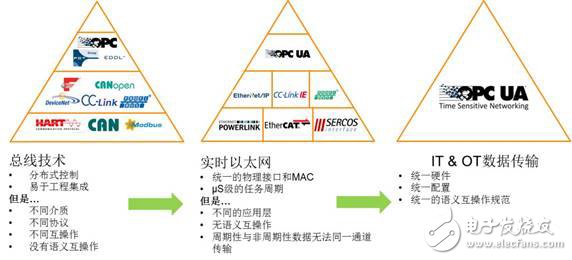
Figure 6 - Development of bus technology
2.1.3 System Connection The system connection includes functional and global integration issues, integrating machine-machine, machine-to-production line, management system, and analysis with intelligent systems.
Therefore, the problem of education lies in solving the framework of the connection, the method of connection, and the overall understanding. One is the need to increase the knowledge and relevance of global integration.
2.2 Software/Digital Simulation Connected devices will have logical sequence, time-beat coordination, positioning and speed matching. Therefore, DigitalTwin is modeling and simulating the production process, and then solving it when changes are needed. Collaborative issues.
Digital Twin usually covers the entire life cycle. Of course, in different stages such as product design phase, manufacturing phase, after-sales service-system service, Digital Twin includes some correspondence from virtual to reality, including some new tools and methods. Such as FMU / FMI learning.
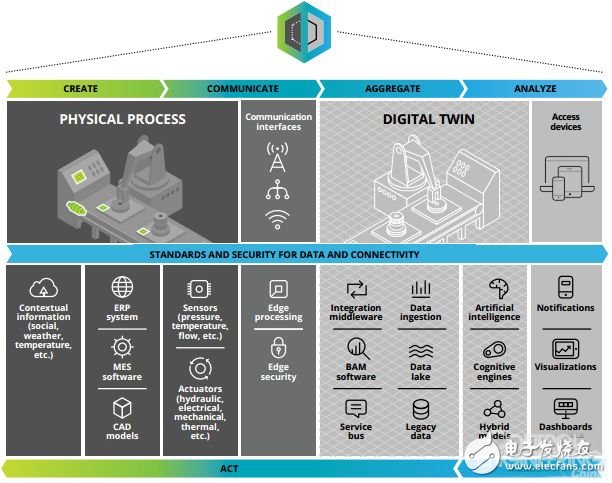
Figure 7 - Construction of Deloitte Digital Hygiene
Digital Twin itself is also a connection and integration issue, from an application perspective, mainly in integration, not in development. The automation major does not develop software like MATLAB/Simulink. Instead, it uses this software to solve practical problems. Automation is a problem-solving profession. Therefore, you must recognize the problem before you can solve it.

Figure 8 - Integration of automation and digital hygiene
2.3 Intervention of artificial intelligence/machine learning In fact, this is already very perfect in terms of optimization of the control mechanism model of automation itself. In the process industry, various control models have been applied to various fields of control, in discrete fields, motion control. Robots are also very mature. Many machine learning introduced by intelligent manufacturing is a new solution that belongs to the original problem.
The modular machine design itself involves modeling simulation, which is related to innovation. Based on these methods, optimization can be performed, including the machine learning algorithm to optimize the control system parameters.
The following picture reflects the growth of future technology applications, with the greatest potential for predictive maintenance, data-driven quality and process optimization. In fact, automation is still advantageous.
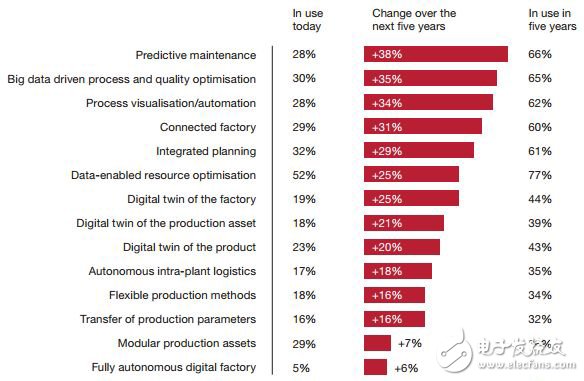
Figure 9 - Big Data Application Scenario (Statistical Learning and Machine Learning)
Sixth, innovation can win the future back to the source of the problem. Looking at the competition of automation in the era of artificial intelligence, we have to return to the source problem, that is, what is the key issue, the fundamental problem, if you do not think about the fundamental problem, then education There is no way out.
1. Who is not dominant, but who solves the problem?
In fact, we discuss who is dominant, but the question that customers have to ask is who can solve the problem?
If you can't solve the problem well, then - you will always be replaced by this place, and marginalization is the case.
From this point of view, the industry will not be as anxious as the academic circles, because the industry itself is problem-oriented, program-oriented, and therefore, it is to solve the actual problems of customers, and, in many cases, IT's so-called problem solving is not As they have described, in fact, many problems, automated solutions have been solved very well.
2. Doing your own things automation and artificial intelligence must be a fusion of work, each exert its own advantages, and through the standard interface of the integration, and automation has its own advantages in the development of intelligence - of course, from From an industrial point of view, it is easy to understand. In fact, the automation profession has always been very confused. It is because this profession is also assessed in the same way as theoretical research, and the university has not been closely integrated with the actual application of the industry to solve practical problems for the industry. The problem-solving talents are the reason why the industry feels that the talents cultivated by the university are difficult to apply quickly.
I didn’t do my education well, but I looked at many artificial intelligence topics and many projects. The starting point of this is that I deviate from the heart of my work. It is easy to go wrong. It seems to be a last resort, but it is actually because of this so-called "Be forced to do so", let yourself continue to decline, towards a vicious circle.
3. Cross-border learning automation is not a theoretical profession itself. It is an applied discipline. Practice plays a very important role in this profession. Moreover, automation technology itself is developed on the basis of cross-border technology. Its advantage lies in "Integration", therefore, the automation professional teaching training is different from other professions, is a "mixed", "cross" education, this profession can not be developed in the vertical direction, but should be developed horizontally.
In this ideology, automation should be an "interface" discipline, and its competitiveness lies in the use of an integrated approach to solve practical problems, including the learning of the latest software tools, chip technology, etc., while the problem is solved around the manufacturing process. Optimization (quality, cost and efficiency issues).
NNMI's main research direction is how to solve the manufacturing process of new materials through manufacturing innovation, including carbon fiber composite materials, flexible hybrid electronics, additive manufacturing, wide band gap power electronics, etc. These cross-border integrations make the traditional industry glow new. Life, which also brings revolutionary improvements to emerging industries, is a concern for automation professionals in the future.

Figure 10 - Solving the actual problems of the manufacturing process is also an area of ​​innovation
For different universities, they can be combined with their actual focus automation in related fields – which is something that some schools have done better.
4. Practicality and innovative talents are practical, can solve specific problems, and do not contradict innovation. Now it is very common to hold manuals in colleges and universities. It is very common for many people to raise objections. However, some school teachers It seems that the head is also "this is easy to work" - yeah! In fact, I really want to say that this is ruining these children, because they just learned "skills" and did not learn "dao", designing ideas and methods, which will seriously restrict their development in the future, and those who do A good school is not so limited.
Innovation is the topic of the most concern of another company. Innovation requires solid basic understanding, critical thinking, and hands-on ability. This topic is not much to say, because innovation is not an easy task, but A solid foundation is the premise of innovation.
Innovation is not only industry but also education, not just technology, but also ideas, methods and tools.
VII. Action - Industry-University Integration Cross-border Learning Automated education must be combined with the actual industry. Otherwise, there is definitely no future. This is already a consensus, and several problems must be solved:
1. Industry integration - Focusing on application Since it is an applied discipline, it is definitely a high level of people used every day. However, the research and development of automation products and the basic software architecture are all the world of European and American companies. This reality also requires us to break. The automation profession can either do this or it can lay a solid foundation for the students. The company needs such talents.
New engineering does propose to combine industry and regional economy to develop majors. Each school can combine local industry development and focus on related applications. The automation profession has not developed well in the past, mainly because it is out of touch with the industry, and the reason is out of touch with the industry. Disjointed and unable to bring about the ability to cultivate practical problems, so that the formation of a vicious circle has become a closed-door car in the university, studying various high-level theories.
Industrial advantages:
â— A large number of application scenarios and problems to be solved;
â— Product and system development is not just about technology, but also includes more comprehensive capacity needs;
â— Have results to verify and advance the theory;
â— Practical examples that can be more vivid in teaching can help students understand;
â— has a guiding role in driving student interest and career development;
â— More cutting-edge technology.
In fact, industry training also requires the theoretical foundation of the university. Many people do not understand many basic theories when they study, and work is often cross-border. For example, developing machines requires software engineering ideas, while mechanical engineering requires electrical. Theory, the basic theory of the university can provide supplementary teaching for the industry here.
Universities and industries must be closely integrated and play their respective strengths. One is longer than practice and one is longer than theory. Then cooperation will produce the effect of “integration of knowledge and actionâ€, theory guiding practice, practicing feedback optimization theory, and entering a positive cycle.
2. Teachers need to upgrade the university's teachers. Many of them lack the experience of industrial practice. Some qualified schools often have the opportunity to participate in many projects. Some of them value their own practices to strengthen the integration of industry and education by undertaking projects and starting companies. Most teachers do not have such conditions. Therefore, there is often a lack of practice that makes it impossible to teach and teach in terms of the combination of industry. The university is similar to a closed system, and it is impossible to attract talents from the industry to the teaching field. This makes the teachers' names very large, but they lack the actual working experience of the industry. Many inexperienced teachers cannot explain these materials. What is the relationship between content and the future work of students?
Why can't universities and industry interact? It is a good way for people from universities to enterprises to conduct exchange training with each other in a variety of flexible ways. Cross-border teaching is the best method. Enterprises in the OT field, such as manufacturing and automation industries, should introduce software engineering and mechanical engineering to teach basic theories to enhance the comprehensive capabilities of engineers.
3. Change the assessment If you ask the university why today's situation, most of the professors at the university are very clear to tell you that "all are caused by the assessment indicators", my most surprising thing is here, it seems that everyone is very clear The crux of the problem, however, is the most difficult to change is here.
Strategic management is the most important to implement, and the first priority of the design of strategic execution is indeed assessment, the interests drive the soul, indeed, only the interests can make people change.
Setting some quantitative assessments, such as reading the number of papers and citations, will have several negative consequences. In order to complete the task, the data seems to be up to standard, regardless of how the education should be carried out, and even some speculators will drill down. Among them, there are good ones, and the next is effective. People who have made these assessment indicators are influenced by scientific thoughts! Do you think that quantitative can show "can control"?
Another problem lies in the constraints. In fact, many universities have a strict and comprehensive assessment, and all have indicators, but the teachers are tired of coping and unintentional teaching. The assessment of KPI itself is particularly suitable for designing in the factory's piece-rate wages and work under standardized work, but it is applied to universities that rely on “thinking†and “innovationâ€. It does have adverse consequences, but does not know the assessment. Do the designers think of teachers as "machines"? Or as a "soul engineer"?
Change must be difficult, even painful. However, it does not change - but it is still so painful, anxious, and ten years of complaints, but it does not help, and the disconnect is getting worse.
Automated education will inevitably move towards integration and play its own advantages, while cross-border, industry-university integration is the inevitable trend in the future.
A business tablet must have powerful business functions. At present, users use tablet products more for entertainment, and insufficient development of commercial value has become a major factor restricting the development of tablet computers. Many far-sighted terminal manufacturers have set their sights on the business tablet field.
Generally speaking, when business users choose tablet PC products, they still focus on "regular items" such as processor, battery, operating system, and built-in applications, especially office software applications, which are a good helper for business users.
First of all, there must be powerful office software such as customer management software, which can record customer data and related information anytime, anywhere. There is also a need for powerful marketing software, software marketing, reducing manual intervention, and one person can handle all the publicity and customer information.
Business Tablet,4k Tablet,5G Tablet
Jingjiang Gisen Technology Co.,Ltd , https://www.jsgisentec.com